Cookies, conversations, and contested elections—2024 is going to shake up how marketers connect with prospects and customers.
With so much change, it can be easy to get distracted and lose sight of the big picture: building the best brand and connecting with consumers in a cost-effective way. To help keep you focused on what matters this year, we’ll be breaking down what each of the big changes means for your business and your marketing strategy.
1. The continued crumbling of third-party cookies
After years of delay, Google Chrome, the most popular browser in the world, is finally phasing out third-party cookies in 2024. Once third-party cookies are gone, marketers will have to rely on first-party data (the data marketers gather from user behavior while on the companies’ website) and zero-party data (the data that customers explicitly, voluntarily share with a company through forms, surveys, etc.). Advertising that relied on third-party data to target audiences will no longer be an option.
What are experts saying about the change?
Smart marketers won’t wait to audit their current cookie setup so they know what needs to change.
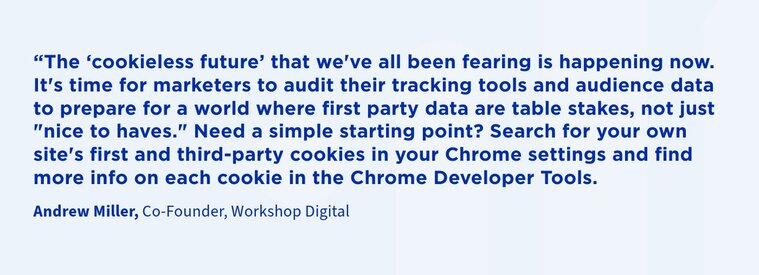
What does it mean for your business?
Without third-party data, you’ll need to learn as much as you can about your prospects and customers from the interactions they have with your company. Call tracking and form tracking let you capture zero and first-party data about your leads and inform you which campaigns or ads drive every call, text, and form submission. You can even take it to the next level by using AI to analyze customer phone calls to discover easy-to-act-on insights—without listening to hours of calls each day.
That’s what the team at Ohana Dental Implant Centers did. Their goal was to improve prospect interactions, optimize their call conversion rate, and ultimately bring in more patients. With AI-powered Premium Conversation Intelligence, they were able to cut down the time analyzing calls every day by 66% while also gaining a better understanding of what talking points converted more callers into patients.
2. Generative AI in search changes the way consumers discover your brand
While search engine algorithms have evolved a lot over the decades, how we interact with the search engine hasn’t changed much. But with Generative AI in Search (SGE) from Google, you will start seeing AI generated content in search results. No more lists of links at the top of the page. Instead, there will be AI-generated summaries to answer the question and AI-generated prompts for follow-ups to help users learn more.
Google is designing a new user experience, but one casualty may be click throughs to your website. Links may be buried beneath the generated answers. It’s also unclear how search engine advertising will change with SGE results.
It may take a few years for SGE to fully take over, but Google will continue to roll it out in small segments this year, giving marketers more clarity on what’s to come.
What are experts saying about the change?
In its current state, there’s a good chance SGE may reduce traffic to your site.
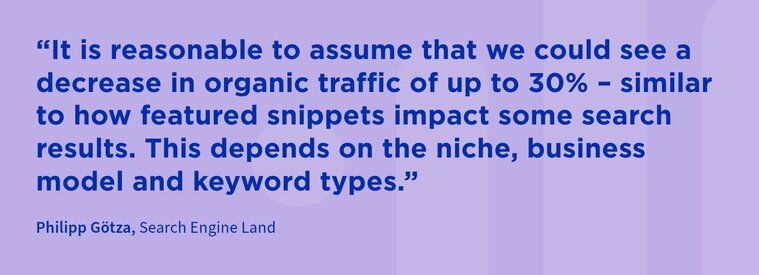
What does it mean for your business?
Marketers are still in a wait-and-see mode when it comes to SGE, but in the meantime your team should keep a close eye on sudden shifts in web traffic in Google Analytics 4. And, it’s time to ramp up monitoring how effective your paid search campaigns are to avoid unexpected impacts from SGE roll-outs.
Use tools like Call Tracking and Form Tracking that help you understand what’s driving prospects and customers to connect with your brand. That’s how K Altman Law reduced their cost per lead by 22% in 3 months. By identifying the campaigns that weren’t effectively driving leads, they were able to reduce spend without reducing lead volume.
3. Hyper-personalized marketing scales up
Smaller marketing teams, in particular, have struggled to put behavioral data from multiple channels to use when creating personalized content. As a result, being able to hyper-personalize marketing and send highly contextualized communications to specific customers at the right place and time has been out of reach for many marketing teams.
However, new AI technologies are enabling highly-personalized ads, emails, and sales outreach at scale for marketing teams of all sizes. Research from McKinsey shows why getting personalization right matters: it can reduce customer acquisition costs up to 50% and increase marketing ROI by 10 to 30%. The same study also shows that 71% of consumers today expect personalized interactions with brands.
What are experts saying about the change?
As marketing gets an AI assist, it’ll be more important than ever to create content that helps you stand out from the crowd.
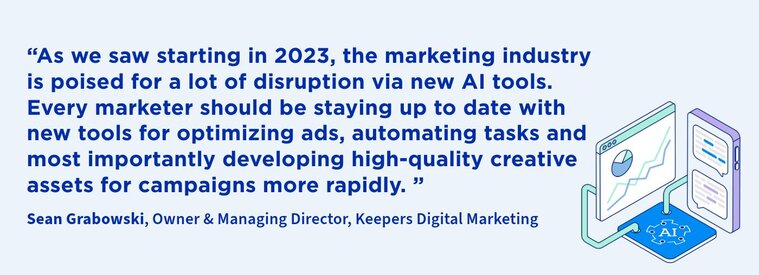
What does it mean for your business?
Impersonal ads and content won’t cut it in 2024—it’s time to put your customer data to work. While you may not be able to personalize the entire customer journey, take advantage of the AI tools available today and identify crucial touchpoints that would benefit the most from hyper-personalization. Take advantage of insights from tools like Call Tracking to identify what campaigns are driving calls and experiment with more personalized versions of the campaign.
4. Conversational AI marketing makes waves
Conversational AI is a “type of artificial intelligence (AI) that can simulate human conversation,” and it’s making it easier than ever for brands to use chatbots for support and marketing purposes. With conversational AI, companies can cut costs and boost efficiency while offering a 24/7 way for consumers to ask questions and learn more about a brand or product.
Conversational AI doesn’t just power chatbots—it is also being applied to the calls human employees have with customers to uncover insights. CallRail’s Premium Conversation Intelligence™, for example, helps customers increase leads by 10% by improving marketing efforts. On top of that, CallRail users dramatically reduce the amount of time they spend reviewing and analyzing calls. Sam Steinberg of Apollo Screen & Shade went from spending 20 hours per week to 5 minutes per week on analyzing calls, a 99% time savings.
What are experts saying about marketing in 2024?
Make conversational AI useful for consumers without taking away the human aspect of your brand.
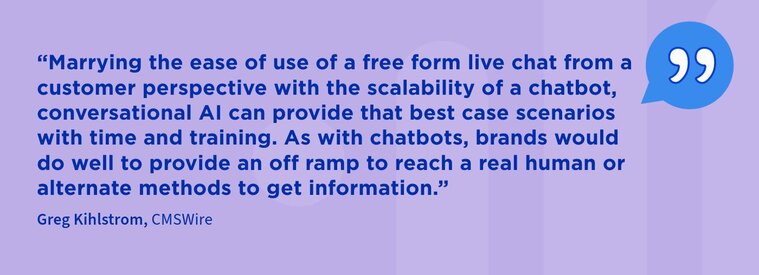
What does it mean for your business?
The advent of conversational AI is a golden opportunity for marketers to create a new touchpoint for consumers with a chatbot and to analyze the conversations that are already happening to uncover new insights. If your company hasn’t tapped into AI to understand what your customers are saying, 2024 is the year. Not just because the technology is so much better now than ever before, but because understanding your customers’ conversations is the edge you’ll need to stay ahead in 2024.
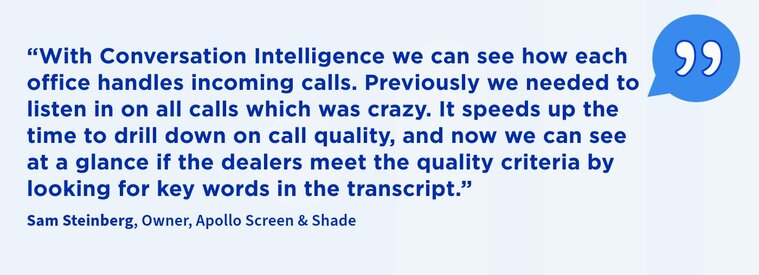
5. Election year shifts consumer sentiment and behavior
2024 is a momentous year for elections in the US and across the globe. At a time of increased political polarization, it will be difficult to market even the most innocuous products without being swept up in it all.
Marketers will need to navigate the environment carefully. Social media will be flooded with more politically charged content as the year goes on and candidates’ campaign messages will make consumers distracted and stressed.
As a result, consumers may be less likely to spend around the election. In 2020, Adobe found that 26% of consumers’ holiday spending would be affected by the election results. Another foreseeable byproduct of marketing during an election year: costs for advertising during the height of the election may increase up to 50% as politicians bid for space.
What are experts saying about the change?
Reconnect with your customers and community by prioritizing your Google Business Profile and reviews.
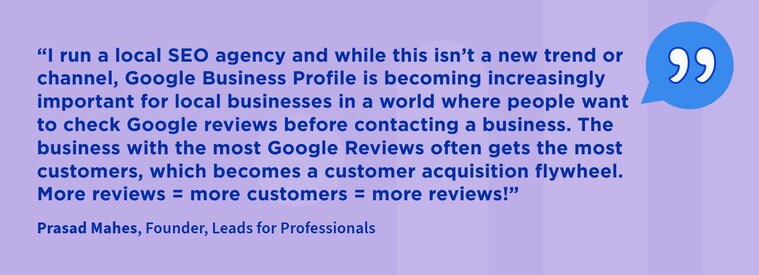
What does it mean for your business?
Don’t ignore the impact the election might have on your marketing efficacy and bottom line. As consumers grow distracted by politics, you’ll need to fight harder for the attention of every lead. And you’ll need to be hyper-aware of your messaging as the elections grow closer.
This year, focus on improving key marketing metrics like conversion rates and cost per conversion to help weather any election uncertainty. For example, when Apollo Screen & Shade started using Call Tracking and Conversation Intelligence, they saw a 42% decrease in cost per lead in the first 4 months. They were able to optimize Google Ads spend and eliminate a specific audience attribute that was causing the wasted spend. That kind of savings can help your company absorb an increase in advertising costs later in the year.
CallRail can help you prepare for change—and maximize your marketing potential in 2024
Change can be scary for marketers, but with the right preparation, you can minimize the impacts and unlock new opportunities.
With CallRail, you’re not only getting a partner that will help you tackle 2024. We’re constantly innovating to make your marketing more efficient. Our newest alpha feature from CallRail Labs, self-reported attribution, uses AI to identify, extract, and surface attribution insights alongside your software-based call attribution to help you optimize your marketing spend.
See how CallRail can help you make the most of 2024 and beyond by starting your free trial today.










